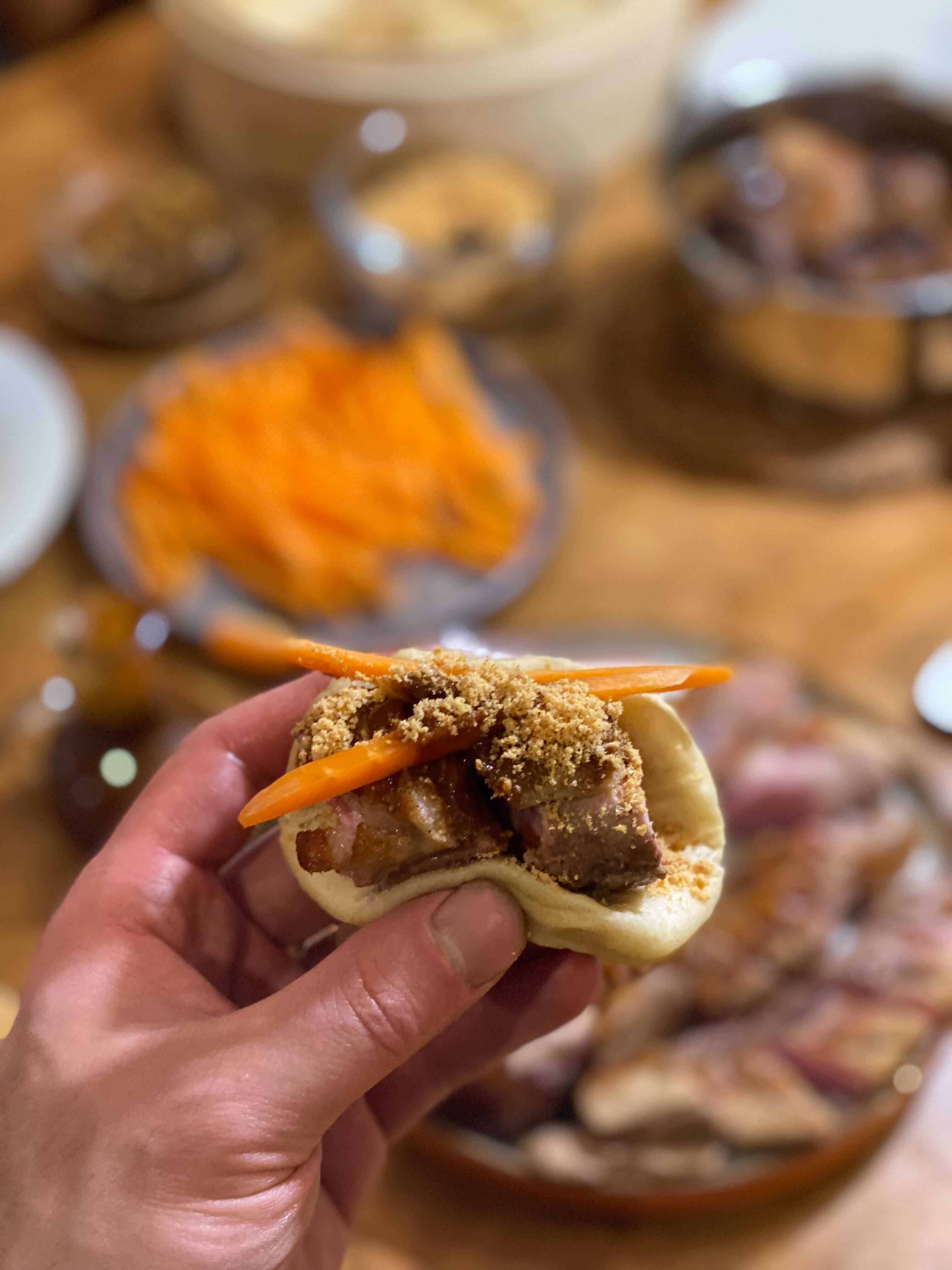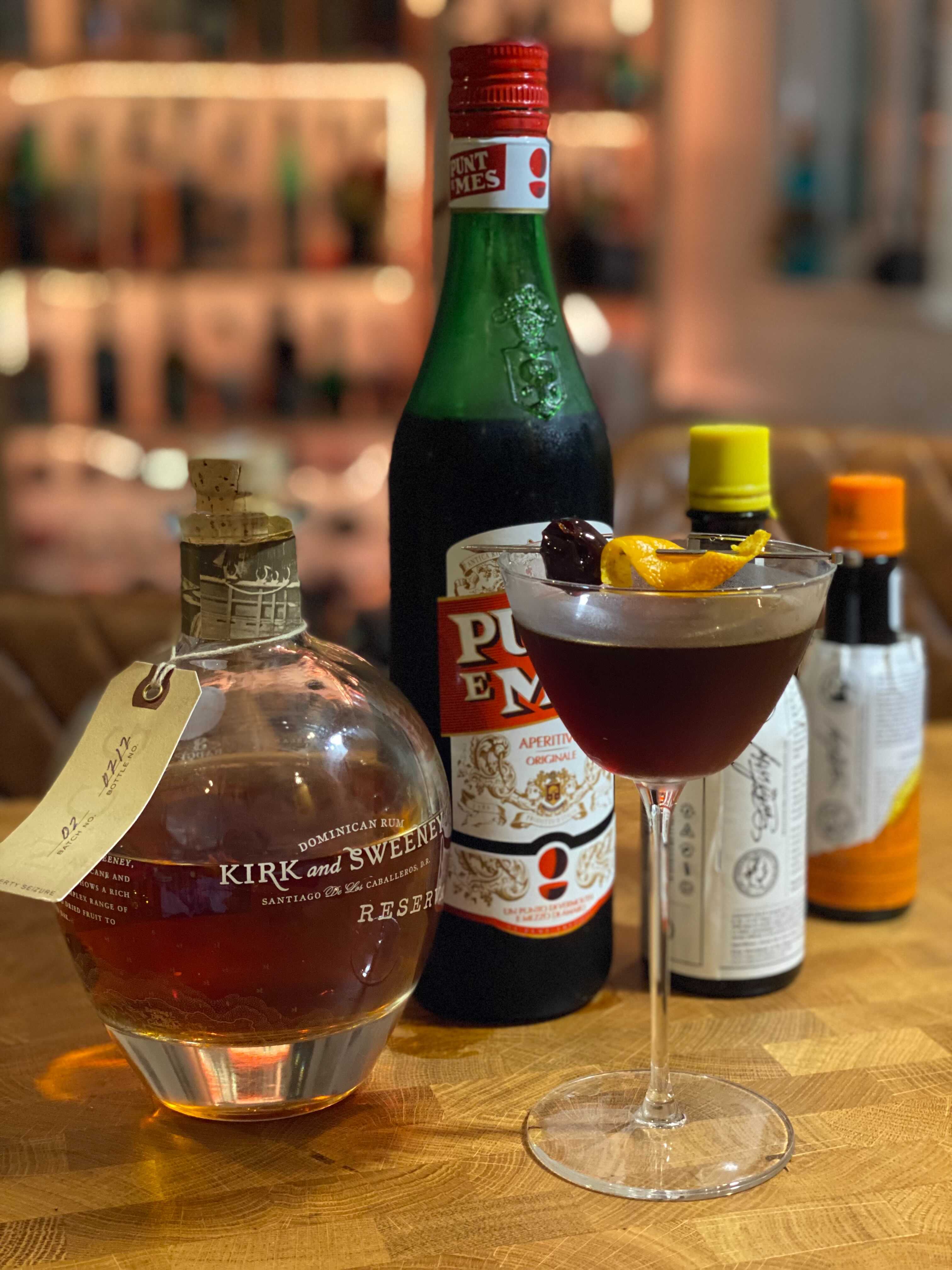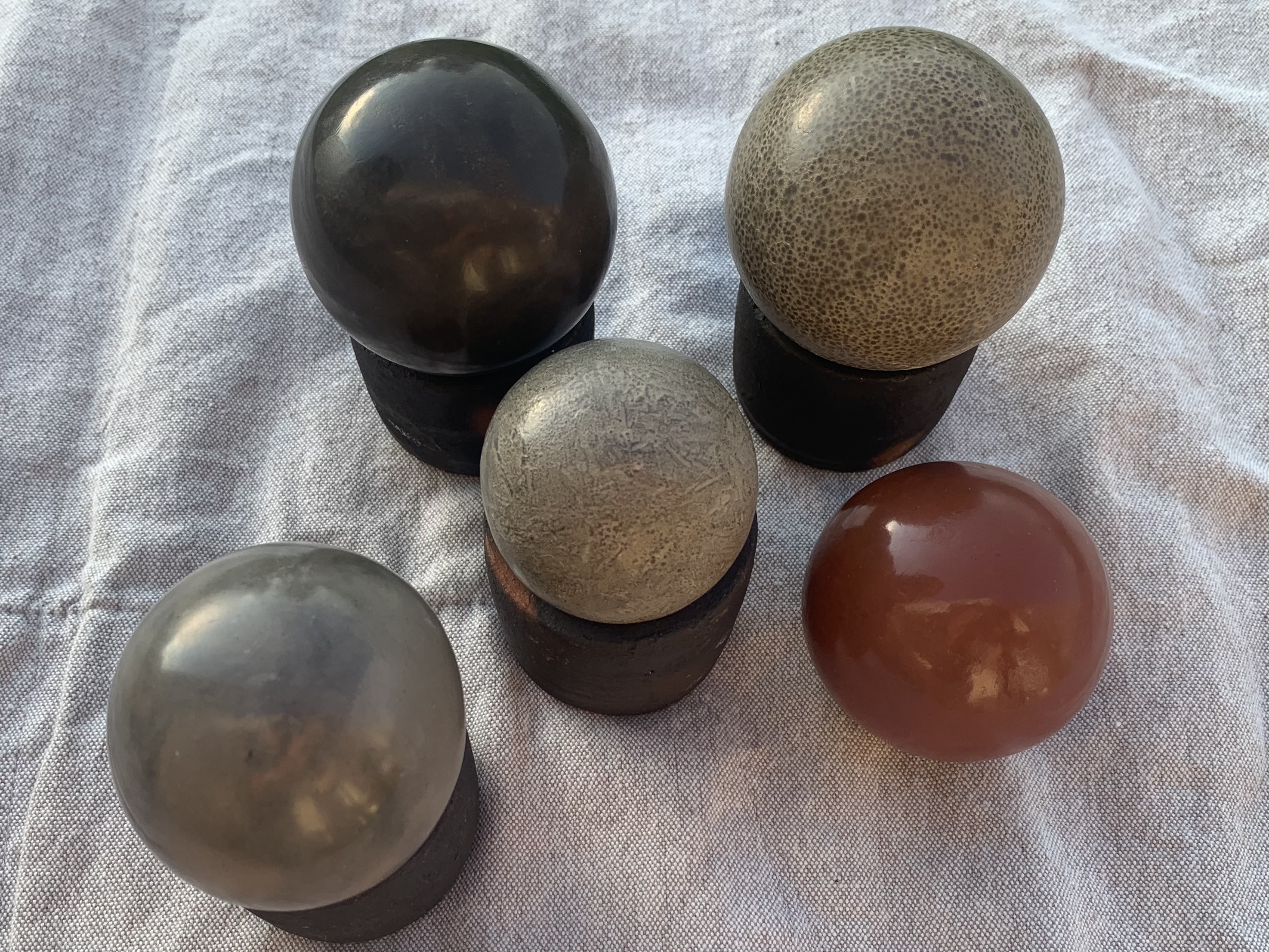Tuesday Triage #45
- TUESDAY TRIAGE #45 by Vadim Drobinin
- On multiple attempts
- Things I enjoyed reading
- 1. My Quest to Make My Dog Internet Famous by Erica Lenti
- 2. The sexual counterrevolution is coming by Mary Harrington
- 3. Drunk as a Lord; the Regency Bottle Men by about1816
- 4. You Probably Shouldn’t Work at a Startup by Evan Armstrong
- 5. An Introduction to Knowledge Graphs by Vinay K. Chaudhri, Naren Chittar, Michael Genesereth
- 6. Genius and Ink by Virginia Woolf review – essays on ‘how to read’ by Aida Edemariam
- 7. How Japanese technology shaped dance music by @attackmag1
- 8. Going Unconscious by Jonathan Miller
- 9. It's probably time to stop recommending Clean Code by qntm
- 10. Text editing hates you too by @_______lord
- Things I didn't know last Tuesday
- 1. Peshwari Naan
- 2. Dorodango
- 3. Nathan’s Famous Hotdog
- 4. Gender-typical toys
- 5. Pan-pan
- 6. "Put that in your pipe and smoke it"
- 7. Tamiko Thiel
- 8. Watershed (broadcasting)
- 9. Coffee plant's natural defense mechanism
- 10. McCaughn v. Hershey Chocolate
- Book of the week
- Thank you and see you in a week!
TUESDAY TRIAGE #45
by Vadim Drobinin ¶
Your weekly crème de la crème of the Internet is here!
25.05.2021 (read in browser)
On multiple attempts ¶
Over the weekend I had my second attempt at cooking gua bao, or the pork belly buns.
The first attempt was an odd one: we didn't have a steamer so had to DIY something out of a pot, steel dishes rack, and some cooking parchment.
Also I didn't think through the recipe well enough, so instead of pork belly we had to improvise with duck breasts, which actually worked quite well.
This time I was ready though: the steamer was ready and lined up with freshly made parchment cartouche.
The dough got twice the amount of salt needed, but twice the amount less of yeast, so spent twice longer proofing.

The pork belly was marinated in some red wine, sugar cane vinegar, and some Chinease spices, and then dropped into a sous-vide for 24 hours.
The ducks, cleaned, scored, and seared, were submerged into a 54C water bath too.
I didn't have fermented beans to make hoisin, but had plenty of peanuts to make Satay sauce.
Once the ducks were cooked, they were seared for the second time.

Once the belly was cooked, it was split into two halfs: one was seared with peanut oil, the other one was cubed and reduced in its cooking liquid.

Everything was served with peanut crumble and julienned carrots.

Also I had some twist on Manhattan but with rum:

Despite gua bao being great, this time they were way harder to cook (i.e took significantly longer) and I am still not sure why.
It could be that the steamer actually makes the steam less condensed than our DIY version, or that the lack of yeast changed something related, or that I just had less water boiling.
I can't really assess the recipe after only two tries: both times I had to use a heavy amount of improvisation to make a dish out of it, which is great but also a bit frustrating. Also my mix-up with the yeast didn't help at all: maybe I should do a few controlled tests with a smaller quantity just to make sure it wasn't due to poor luck.
Here is the point: multiple attempts are the only way to turn something decent into something great. Do not accept something just because it is "good enough".
It works only when writing code.
Things I enjoyed reading ¶
1. My Quest to Make My Dog Internet Famous by Erica Lenti ¶
While the article is about dogs and social networks (actually not at all), the overall idea pretty much applies to anything on the Internet:
It wasn’t Belle’s fault. She isn’t the one inadequate at influencer culture—I am. Without a charismatic, witty human behind the account, there’s no hope. And charismatic, witty influencer, I now know, I am not. My own Instagram account is a boring space for anyone who doesn’t already know me, a collection of memories no one but my loved ones would ever care about. Like owner, like dog; it just took an attempt to break the mould for me to see it.
Personally I gave up on growing social networks quite a while ago. Organic users are the most precious, and they come if you write or post.
Everything else is just about faking it (yeah, a more than a decade in the field and I still don't understand social media marketing as an occupation).
2. The sexual counterrevolution is coming by Mary Harrington ¶
An unexpected look at the state of affairs (pun not intended) among Americans, some of whom prefer to get married early and surprisingly face a backslash from their peers.
The current they’re swimming against is strong. Charlotte reports that, when she got engaged in her senior year at Harvard, her peers looked at her ‘like I was crazy’ for expressing a preference for children over a high-flying career. Narayan tells me that his views on the importance of marriage and the qualities he seeks in a potential spouse have left him facing accusations of woman-hating.
3. Drunk as a Lord; the Regency Bottle Men by about1816 ¶
A great story, and a nice insight into the life back then. This is a big question:
What could be said about him? He was a six bottle man, said the newspapers- a celebrated six bottle man. Alcohol did not cut short his life however; he was 82.
What was a six bottle man? You may well be guessing that they were people, who drank six bottles of alcohol a day, and on one level you are correct, but there is a lot of ambiguity in that statement. What would have been in the bottle?
I can give you a hint: there were no seven bottle men, or one bottle men.
4. You Probably Shouldn’t Work at a Startup by Evan Armstrong ¶
Out of all the reasons to work for a startup, people mostly joing hoping for a venture fortune from stocks, or to get rid of boredom (because there is rarely a work-to-life balance in startups):
Of course, the feeling of fulfillment that comes from the pursuit of a holy mission is not the only reason to work at a startup. The additional attraction of startups is that living in one is supposed to make you the resident of a land of builders. There is lots to like about the projects you get at a startup! You’ll have a huge breadth and touch all the business in some way. Doing this is challenging, fun, and rewarding.
Being able to get the breadth is exciting – but the scale is more valuable, and that's something really hard to get in a small company.
That being said, I have a draft of a separate post on my thoughts about startups. I guess one day I will finish it.
5. An Introduction to Knowledge Graphs by Vinay K. Chaudhri, Naren Chittar, Michael Genesereth ¶
I spent years working on making knowledge more accessible and easier to share, and the concept of knowledge organisation is always fascinating. Here is another way to do that:
What is particularly new and exciting about the Wikidata knowledge graph? First, it is a graph of unprecedented scale, and is one of the largest knowledge graphs available today. Second, even though Wikidata is manually curated, the cost of curation is shared by a community of contributors. Third, some of the data in Wikidata may come from automatically extracted information, but it must be easily understood and verified as per the Wikidata editorial policies.
Graphs to show relationships between data are not a new thing, but this is an interesting object to research and see if something unexpected shows up.
6. Genius and Ink by Virginia Woolf review – essays on ‘how to read’ by Aida Edemariam ¶
I really enjoyed this short piece on reading and readers:
This method can produce blind spots – about Ulysses, most famously (“a memorable catastrophe – immense in daring, terrific in disaster”), and more complicatedly when it comes to issues of class (an alternately kowtowing and condescending attitude to “rural” writers such as Thomas Hardy). But it is also where some of her best insights come from, because one of the things she clearly liked was serious craft.
Notably, Ulysses is still lying on a shelve: I enjoyed it in Russian, albeit missed most of the structure, but it is pretty much impossible to get through in English.
7. How Japanese technology shaped dance music by @attackmag1 ¶
Something I never really thought about: the way Japan brought musical instruments to the market changed the music we listen to.
Along with affordability and new ideas, Japanese instrument manufacturers such as Roland, Korg and Yamaha, and DJ gear companies like Audio-Technica, Technics, and Pioneer DJ, were able to parlay local business practices into global power.
Tats summed it up with one word: industrialisation. “It’s the same story as Toyota, Nintendo and Sony,” he explained. “Japan did not invent the automobile, gaming console or the cassette tape, but it took over the world with its industrialisation.”
I probably could guess but never actually thought that Roland and Korg are Japanese.
8. Going Unconscious by Jonathan Miller ¶
A surprisingly easy to read story about "invention" of hypnosis and the way it changed modern medicine (mostly by helping to learn more about reflex).
By formulating the concept of “nervous sleep,” or hypnotism, Braid dealt a death blow to the pseudoscientific theory of animal magnetism and at the same time supplied a more convincing alternative theory. Nevertheless, it is easy to overestimate his intellectual achievement, or to put it more accurately, it is easy to underestimate the extent to which Braid was disabled by his own prejudices.
"Surprisingly", because the previous book about hypnosys which I've opened around five years ago happened to be a textbook and worked as a great sleep aid for a few months.
9. It's probably time to stop recommending Clean Code by qntm ¶
When I got into development, Martin's Clean code was one of the hottest topics out there.
People used to swear that just keeping it next to a computer cures apps from bugs.
These days more and more people realise, that despite being great in some scenarios, there is no ultimate silver bullet, and developers need to think before blindly sticking to a specific approach.
This is done as part of an overall lesson in the virtue of inventing a new domain-specific testing language for your tests. I was left so confused by this suggestion. I would use exactly the same code to demonstrate exactly the opposite lesson. Don't do this!
I would still recommend it though. A confused developer who read it is probably better prepared to work on a big project than the one who didn't read it yet.
Especially given that most of their teammates spent years applying this book all over their codebases.
10. Text editing hates you too by @_______lord ¶
As someone who built a way more messenger apps than one should in their lifetime, I find this to be terribly ironic: text editors don't like things we put into them as much as we don't like using them.
Those options are all bad, so you're probably hoping there's some fourth option. There is! Many editors, like TextEdit, won't even allow us to put a caret after the a, since the skin tone modifier is treated as a single unit with its previous character. This makes sense in the emoji context, and even works alright for this a. However, what happens when the emoji modifier is the first character on a line?
Next time I am writing a text editor, I will just suggest writing text with a pen, unless someone manages to come up with a better way to build it.
Things I didn't know last Tuesday ¶
1. Peshwari Naan ¶
So think of a fruit cake but for a spicy curry:
The sweet filling is a mixture of sultanas, almonds, coconut, and butter. This makes the naan a delicious sweet Indian bread great with an extra spicy curry!

I mean, I would love to try and the recipe seems to be quite fun, but on the other hand I'd probably stick with cheese and garlic naan for a while anyway.
2. Dorodango ¶
I think I was onto something when rolling balls out of soil and water in my early childhood.
Coming from the words doro, meaning “mud” and dango, a type of Japanese flour cake, hikaru dorodango consists of forming a mud ball by hand. Layers of increasingly fine dirt are added to the surface over the space of days to a point at which the dorodango can be polished to a high sheen (hikaru means “shining”).

It just took me a few decades to learn that this is considered a form of art in Japan.
3. Nathan’s Famous Hotdog ¶
How to promote hot-dogs cheaper than anywhere else in 1916? Just dress some folks as doctors and make them it those hot-dogs every now and then.
While everyone sold hot dogs for ten cents apiece, Nathan boldly slashed his price to five cents. His competitors were livid and slandered the quality of his hot dogs. To overcome that misperception, Nathan reacted with the spirit of a pioneer American entrepreneur. He hired a few people, dressed them up as doctors—complete with white coats and stethoscopes—and got them to regularly eat at his stand.
When customers saw these “doctors” eating Nathan’s five-cent hot dogs, they figured the product was healthy enough for them too. Sales boomed, and Nathan’s was on its way to becoming the iconic brand we know today.
Given that they've been popular for more than a century now, seems like that marketing worked out really well.
4. Gender-typical toys ¶
For fifty years scientists were trying to force children with toys not usually associated with their gender just to find out that boys mostly prefer to play with trucks and girls with dolls, and there is no social pressure to it.
These results have remained remarkably stable over the past 50 years, according to a 2020 meta-analysis of research on gender differences in toy preferences. Published in Archives of Sexual Behavior and titled "The Magnitude of Children's Gender‐Related Toy Interests Has Remained Stable Over 50 Years of Research," the analysis examined 75 previous studies, 113 effect sizes, and a range of toy preference measurements.
Wonder if something would change over the next fifty years? I definitely consider Doom to be a gender-neutral game.
5. Pan-pan ¶
There is a famous message "Mayday", which is pronounced three times to notify about something really urgent and dangerous, like an Eastern European dictator trying to land your plane or something.
Apparently there is a less urgent version too:
The radiotelephony message PAN-PAN is the international standard urgency signal that someone aboard a boat, ship, aircraft, or other vehicle uses to declare that they have a situation that is urgent, but for the time being, does not pose an immediate danger to anyone's life or to the vessel itself.
6. "Put that in your pipe and smoke it" ¶
Here is a curious Irish saying:
The colloquial phrase put that in your pipe and smoke it and its variants mean accept or put up with what has been said or done, even if it is unwelcome.
Its earliest recorded occurrence is Irish English and is associated with the obsolete figurative sense to consider of the verb smoke;
So "to smoke" used to mean "to consider", how cool is that?
7. Tamiko Thiel ¶
Here is a rare story about someone who has inspired Steve Jobs and his designs:
[Joanna] told me way after the fact–way too late!–that Steve Jobs came to her and said, ‘Find out who designed the Connection Machine, I want them to design my NeXT computer,'” Thiel recalls. “She said, ‘Sorry you’re too late. Tamiko’s gone to Germany to become an artist. I’m going, ‘Joanna, you should have found me!’
All thanks to a supercomputer.
8. Watershed (broadcasting) ¶
I was aware of the context but didn't know how it is called.
In broadcasting, the watershed is the time of day after which programming aimed towards mature or adult audiences is permitted.
Also I am still not sure if there is a word for it in Russian. Seems like no.
9. Coffee plant's natural defense mechanism ¶
Caffeine is the coffee plant's defense mechanism. With the plant's leaves it gets into the soil and poisons it, so other plants that consider it toxic do not grow nearby and do not compete for sunlight.
Caffeine, for example, is the coffee plant's natural defense mechanism, produced by a mutated enzyme N-methyltransferase, typically found in most plants. Caffeine leaches into the surrounding soil as leaves from the plant drop and are decomposed into the soil. Caffeine is toxic to other plants, which prevents other plants from growing around the coffee plant and competing for sunlight.
And then comes the human and drinks it. Ah, the irony.
10. McCaughn v. Hershey Chocolate ¶
I wrote about Hershey vs Hershey before.
Seems like they just love suing companies:
They assert that chocolate is food and candy is not, and hence chocolate cannot be properly described as candy. But it is common knowledge that sugar, also a food. is an ingredient both of candy as thus defined and of sweet chocolate, sometimes to the extent of 50% or more of the latter, as was conceded on the argument here.
So chocolate was classified as “candy” under the Revenue Acts of 1918 and 1921, and thanks to that it was taxed as a candy.
Hershey's tried to sue the country and get a refund for $8kk in taxes arguing that it is "food", not "candy".
They lost.
Book of the week ¶
This week's book was a rather random encounter, but so far I have been enjoying it a lot.
Think of all those movies you grew up with: chances are, a heavy portion of them would be made by Pixar.
And pretty much every single Pixar's film has a great story to it, and that story has a very clear structure and narrative.
The same way Joseph Campbell explains the formula to a successful monomyth in one of my favourite books, here is Dean Movshovitz doing the same, but based on Pixar's movies in his Pixar Storytelling:
On a different, deeper level, your idea must force your characters to go through an emotional journey. A character, forced out of its element, is compelled to work hard to get back to its comfort zone, just as we would in life. This desire propels actions, decisions, and emotions, which are the meat of your story’s inner narrative. Toy Story’s concept of “toys are actually alive” is an immediately exciting one that offers many narrative possibilities and a rich world to explore. However, it isn’t until the concept evolves into “favorite toy gets replaced by a newer, shinier toy,” that emotional stakes are introduced.
I also started to look at Ratatouille the movie quite differently after finishing the first few chapters.
Won't spoiler you the best parts though.
Thank you and see you in a week! ¶
If you have any questions, or want to suggest a link for the next newsletter, please drop me a message on Twitter or reply to this email.
Cheers! 🍸